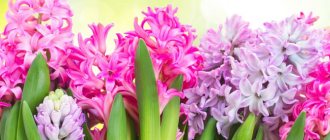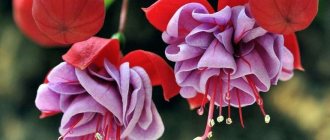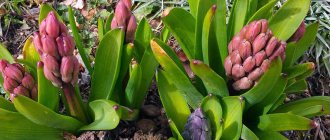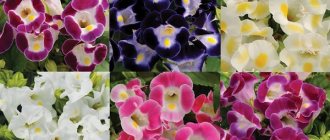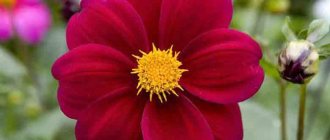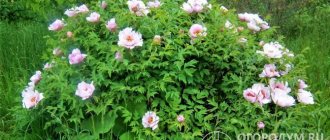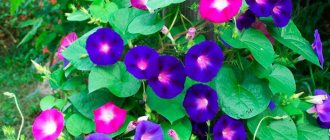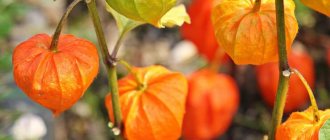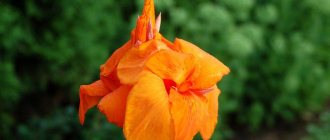Hyacinth is a very beautiful plant that can be grown both in open ground and at home. In its homeland, in Asia Minor, it begins to bloom during the period of warm rains, which is how it got its name. In order for the inflorescences and vegetative parts to fully form, it is necessary to dig up this flower every year, store the planting material in certain conditions, and also plant it in a timely manner.
Brief description of cultivation
You need to plant bulbs in early or mid-autumn. They are removed from the soil after the foliage turns yellow. As a rule, this falls in June-July. These parts of the plant should be kept in a place that is well ventilated and has moderate humidity. For storage, paper bags or boxes are used, inside which the bulbs are laid out in 2 layers. During the first two months, it is recommended to maintain the temperature at 25°C. After this period, it is better to transfer the planting material to a room where the temperature reaches 17°C.
For good development, hyacinth needs a lot of bright sunlight. The soil must have good throughput, a large amount of humus, nutrients and an acidity below 6.5.
When a dry period begins, it is necessary to water the plant so that the top layer of soil (15-20 centimeters) is well saturated with water. Over the entire season, hyacinth needs 2-3 feedings. The first time it is performed at the beginning of the growing season using phosphorus-nitrogen fertilizers. The second is when the buds form, and the third is during flowering. For the latter, fertilizer is used with fertilizing that contains phosphorus and potassium. The flower is propagated by children and seeds.
When growing hyacinth, you may encounter an invasion of aphids, flower flies, stem and root-knot nematodes, thrips, onion root mites and mole crickets. In addition to these problems, a flower can become ill with fusarium, variegation, rhizoctonia, penicillium rot, as well as yellow or soft bacterial rot.
It is worth considering that any part of hyacinth contains a poisonous alkaloid.
Features of hyacinth
The birthplace of the flower is considered to be the Middle East, North Africa, and the Mediterranean. But to make the plant population larger, Holland did a lot. For this reason, this country was given the name “hyacinth center”. The city of the Netherlands produced the most species. And the city of Haarlem sent many bulbs to different parts of the globe every year.
The 30 centimeter stem of the plant continues to the bottom. When the bush fades, the stem and foliage begin to dry out. But the upper leaf plate forms a bud in its corner. Then it will transform into a bulb, and next year it will bloom. Other plates can also form bulbs, but they will be weaker. Gardeners use these parts of the plant to grow new shrubs.
Inflorescences consist of double or simple buds. They can be purple, red, white, pink, yellow, blue and other colors. The shape of the brushes resembles a cone or cylinder, and the perianth resembles a bell-shaped funnel. The hyacinth fruit consists of three nests, each of which contains a pair of seeds with an air shell.
How to care at home
Flowering plants are often given to ladies on March 8th. Then the pots with them are thrown away. But in vain. They can be used for planting in the garden. You just need to know how to care for hyacinth after flowering at home so that you can plant it again in the fall.
In the case where the gift was sold in a small plastic cup, it is better to transfer it to a larger container using the transfer method. The flower will receive everything it needs and develop well.
The transplant consists of the following stages:
- a drainage layer of expanded clay or broken shards is poured onto the bottom of a selected container with a height of up to 15 cm and a diameter of 8–10 cm;
- nutrient soil 5 cm high is placed on the drainage;
- having carefully tapped the container with the flower, it is removed with a lump of earth;
- installed in a new pot, sprinkling fresh soil around it.
Attention! The top of the bulb should rise 1/2 of its height above the pot.
Features of cultivation
To grow hyacinth as a healthy, beautiful plant, you need to follow some rules, because it is capricious and requires a lot of attention. Here are the main conditions that are recommended to be met:
- Suitable soil is considered to be one whose acidity level is neutral. It should contain 1 part turf soil, as well as 1 part leaf soil. If there is only acidic soil, it is recommended to add lime, and if it is clayey, then sand.
- Although the flower feels best in a well-lit place, excessive light should not be allowed. Because of this, the hyacinth may become damaged.
- Liquid stagnation should not be allowed. For this purpose, gardeners recommend providing the plant with a good drainage system.
- This flower does not tolerate fresh fertilizer of organic origin.
- Since it also needs protection from draft winds, a suitable place for its cultivation is considered to be an area near bushes and various trees.
How to choose a good, healthy plant in the store
Flowers bought in a hypermarket need special care, which is sometimes impossible to provide at home.
The success of growing hyacinth in a pot directly depends on the quality of the seed. In order to avoid mistakes, the following rules are recommended.
- For forcing, bulbs with a diameter of at least 50 mm are used. If hyacinths are to be grown in the garden, finer seeding material will be suitable.
- Depending on the variety, the maximum permissible diameter of bulbs for growing hyacinth in a pot is 40–60 mm.
Requirements for the appearance and quality of seed:
- absence of rot and mechanical damage;
- smooth surface;
- absence of traces of pests and diseases;
- structure that is hard to the touch.
Important! The main criterion for choosing hyacinth for growing in a pot is the ratio of the diameter of the bulb and its bottom. It should be 1.5–1.6:1. For unsuitable seed, this ratio is much lower.
Planting hyacinths in open ground
What time to plant. Let's look at how hyacinths are planted in the fall. This time of year is considered suitable for such a procedure. More specifically, it is at the end of September - beginning of October that gardeners begin to work. An earlier period can destroy young seedlings due to possible frosts. If, on the contrary, you plant it later, the flower will not be able to develop a good root system. This increases the risk of death.
In order for hyacinth development to proceed well, preliminary preparation of the land should be carried out. To do this, gardeners dig the soil 30-40 centimeters deep, adding rotted compost or 3-4 year old humus (10-15 kg), magnesium sulfate (15 g), superphosphate (70 g), magnesium sulfate (30 g) per 1m2. Further actions should be carried out based on the composition of the existing soil. If it is sandy, then fertilizers with potassium and magnesium are added 1.5 times more. Sometimes the soil is also diluted with sand or peat.
With the onset of spring and summer, hyacinths need fertilizing that contains nitrogen.
Planting in autumn. So, when the time has come for September-October, you can start planting the bulbs. It is better to use medium sizes, because such specimens are more resistant to bad weather. The planting material is first carefully inspected for injuries, soft or sore spots. If there are bulbs with such damage, then they are not suitable, they are removed. Healthy material is dipped in a fungicidal solution for half an hour. Planting depth depends on the size of the bulb. 5-centimeter ones need to be deepened by 15-18 centimeters, and smaller ones - higher. The distance between them should be approximately 15 centimeters.
For better development indicators, it is recommended to create a “sand jacket”. To make it, sprinkle a 3-5 centimeter layer of river sand at the bottom of the depressions. An onion is pressed into it, which is again covered with sand and then with earth. This little trick allows you to avoid stagnation of liquid, which means that the risk of rot on the planting material will be much less. If the soil is dry during the procedure, it needs to be watered after the work is completed.
Spring planting. Hyacinths are planted only in autumn.
How to replant correctly after purchase?
It should be borne in mind that during growth the bulb will begin to increase in size and will protrude above the soil surface. Therefore, it should be planted in the upper third of the pot, and not at the level of the edges.
Step-by-step instruction
The planting process includes the following steps:
- A layer of drainage about 3 cm thick is poured into the prepared pot. Coarse sand or fine crushed stone can be used as drainage material.
- The container is filled with substrate.
- The bulb is gently pressed into the ground (do not screw it in).
- Sprinkle it with earth, but so that its top is above the ground level.
- The substrate is slightly moistened; it should not be very damp.
- The pot is covered with dark material or put away in a dark place.
Rooting should occur at a temperature of +5-+9 degrees.
It is important to consider that when planting several bulbs in one pot at once, they should not touch.
Hyacinth care
Although caring for hyacinth that grows in open soil is not difficult, you need to know and follow certain rules. For example, it is very important to regularly check the area for the presence of weeds - there should be none. In addition, it is worth systematically loosening the soil. To make weeding, watering, and loosening less frequent, gardeners cover the soil with mulch. Hyacinth needs watering only during a long absence of rain. If such a period has arrived, then the plant is watered so that the top 20 centimeter layer of soil is wet.
Fertilizer . For better development, it is recommended to fertilize the flower on time. During the entire growing season, it is recommended to feed the shrubs 2-3 times. To do this, gardeners use dry and liquid fertilizers. The latter type allows you to save on composition consumption. The plant should be watered before fertilizing. When using a dry product, the substance is distributed over the area and introduced into the soil using a hoe.
Transfer. Transplanting to a new location does not require much effort. To do this, you need to wait until flowering is completed - usually the beginning of summer. When this time comes, they wait a couple more weeks so that the planting material can recover. After this, the bulbs are dug up, taken away for storage, and planted in a new area in the fall.
Personal experience: What NOT to do!
Several years ago I gave my mother, sister and myself a gift
